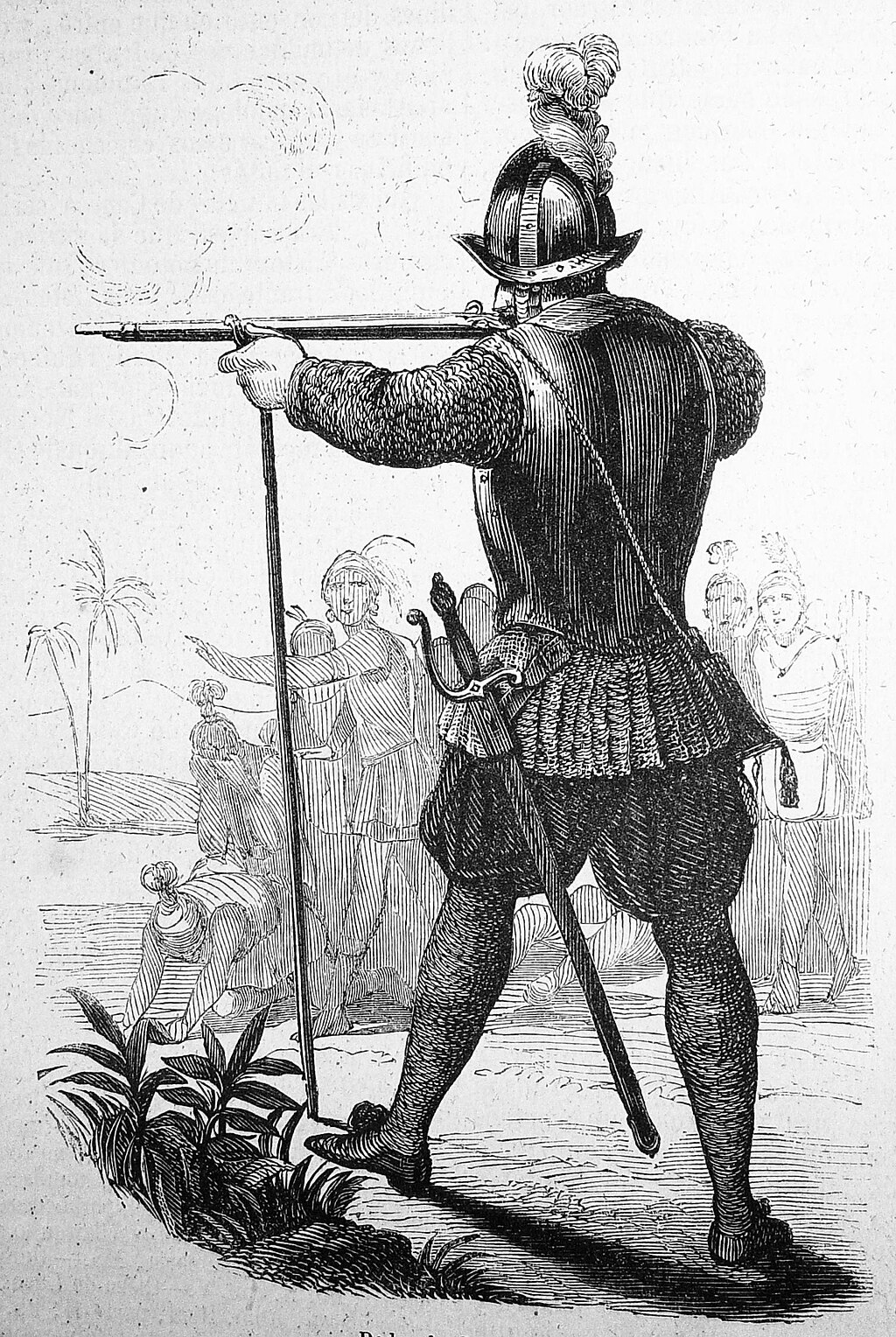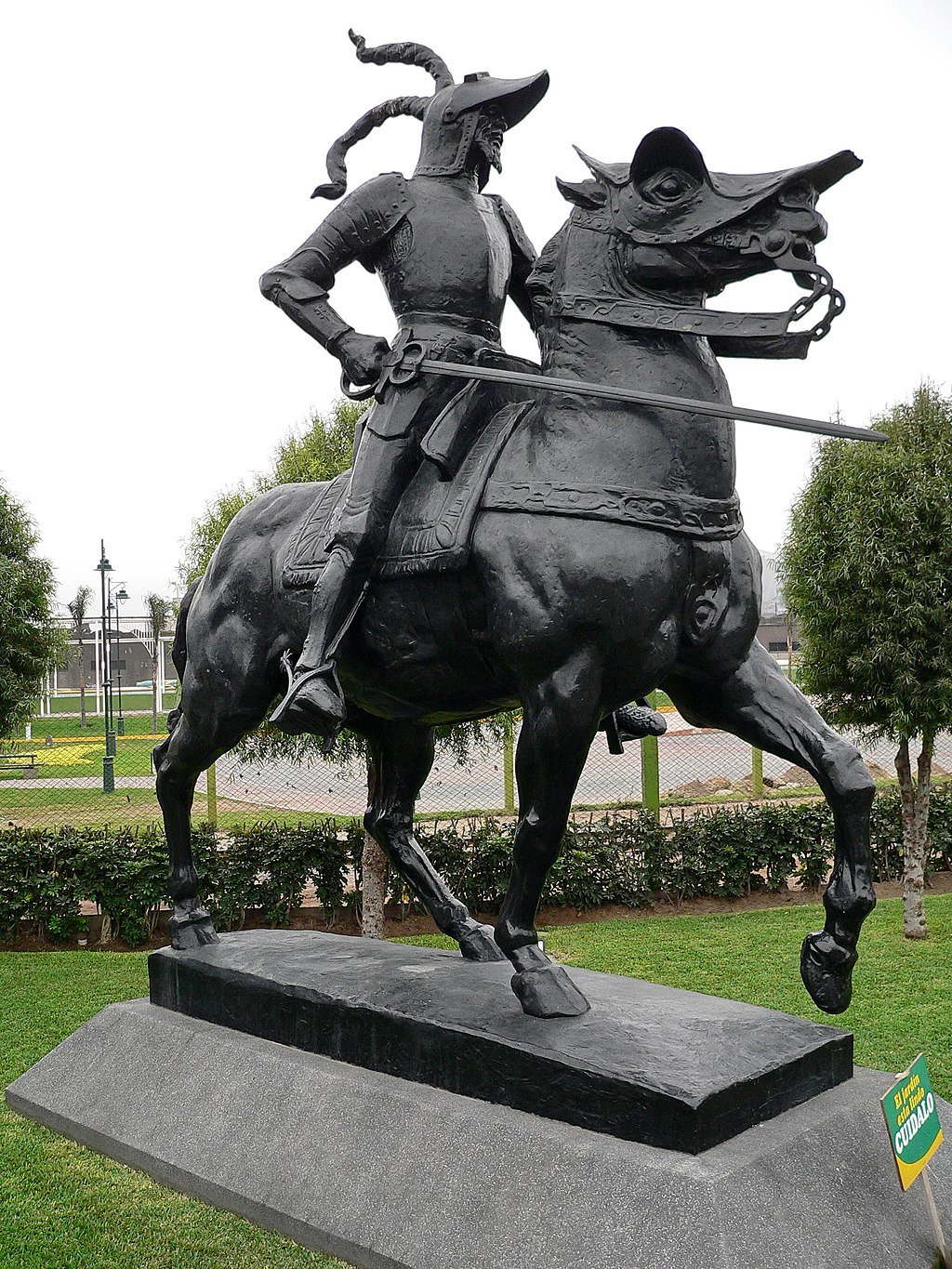
After Constantinople, a city first settled by ancient Greeks in the 7th century BC as Byzantium, fell to the Ottoman Empire in 1453, many Greeks made their way to European countries, including Spain. There, some flourished in the Spanish army as Conquistadors, helping the country fight battles against the Ottomans and discover new worlds.
The Greeks dispersed into many pockets around the European continent, earning their way as artists, scholars, merchants, and soldiers in Italy, France, Austria, Russia, and Spain, among other places.
Many Greek soldiers in the latter country were mercenaries, or Condottieri, who fought alongside the Spanish forces against the Ottomans in several battles. Hellenic military men even made the trip to the New World in the 1500s, serving as shipmasters, sailors, soldiers, artillerymen, conquistadores, and explorers.
Greek Conquistadors Who Served in the Spanish Army
One notable Greek who migrated to Spain was Don Theodoros Griego, an explorer and conquistador born in the Aegean. He joined Spanish conquistador Panfilo de Narvaez, who later participated in the conquest of Cuba, in an expedition to North America in 1527.

Theodoros was reportedly one of the first Greeks to step foot on the “new” continent in the modern era. The voyage moved from Cuba and reached Florida, when Narvaez instructed his men to explore the region and march up north. They encountered the Apalachee in 1528, and Narvaez reportedly attacked the indigenous people and destroyed their settlements.
The native tribe launched a retaliation on the expeditionary force, which led to a depletion of Narvaez’s resources. After this, Theodoros is said to have built five rafts using liquid from pines, leather, and wood, saving the lives of most of his company.
The Greek eventually met his end when he was searching for water in a nearby Indian settlement. In the present day, thanks to the efforts of the Panhellenic Federation of Florida, a 900-pound bronze statue of Don Theodoros Griego is displayed on a granite pedestal in Clearwater Beach, Florida. The monument features a plaque that says “The history of Greeks in America starts from here.”
Pedro de Candia
Pedro de Candia was born into a noble Venetian family that had settled on the island of Crete (then named Candia by the Venetians). He later served in the Spanish army as a Condottieri, fighting against the Turks in various places around the Mediterranean Sea.

Like Don Theodoro, Candia also joined Spanish expeditions across the Atlantic, his first being in 1526 when he followed Pedro de los Rios to Panama. A year later, he joined an expedition led by Francisco Pizarro and Diego de Almagro, who set off to explore the regions south of Panama.
During the expedition, Almagro and Pizarro disagreed on their subsequent destination. Almagro argued that Panama was the best option because they could gather provisions and reinforcements.
Pizarro, however, stayed in the Isla del Gallo with just a few men, including Candia, who became known as the ‘famous 13,’ deciding to stay with him. Pizarro and his colleagues then teamed up with a different expedition to the south, passing through modern-day Colombia and Ecuador until they reached northern Peru.
It was there that Pizarro sent Candia to explore the city of Tumbes. The Greek Conquistador went to the city alone without the Spanish forces, and the native tribes were reportedly fascinated by the way he looked. Sporting his shining armor, he was also very tall with white skin, blue eyes, and black hair.

Candia was then taken to the Inca governor, who was curious about the Greek conquistador’s arquebus (heavy, 15th century matchlock gun), and challenged him to prove his might. It is reported that Candia subsequently aimed his weapon at a wooden tablet, and upon firing accurately, completely destroyed it.
Having been welcomed into the city, Candia reportedly saw golden and silver leaves and jewels, completely unprotected and easily accessible. The Greek Conquistador reported this to the Spanish forces upon his return to the company, filling his companions with enthusiasm.
Candia made his way back to Spain in 1528 and was declared a nobleman, commander of the artillery of the Spanish army in Peru, and mayor of Tumbes.
Jorge Griego
Another Greek Conquistador, Jorge Griego (George the Greek), followed Candia to Spain. Jorge served as a footman in the Spanish army in Peru, and under the command of Pizarro, he took part in the battle of Cajamarca, where around 140 Spanish soldiers took on an Inca army of nine thousand and won.
Jorge was given his share of Inca treasure upon victory and was later made an encomendero, meaning he was given special permission by Spanish authorities to demand tribute and forced labor from native people in a defined territory. This was in the city of Jauja in Peru.
Later in his life, he moved to Lima, where he owned a large estate. He took part in the 1544 and 1545 campaigns of Blasco Nunez Velad and Pedro de la Gasca. Moreover, he manufactured enormous amounts of gunpowder for the Spanish army.
Jorge spent his latter years in Triana, a district of Seville in Spain.
Juan Griego
Juan Griego, another Greek Conquistador, was a soldier in the Spanish army during the conquest of the Philippines. He followed Miguel Lopez de Legazpi, a Spanish Conquistador, in his campaign and was consequently rewarded with the role of encomendero for the island of Mindanao.
His given land area comprised much of northern Mindanao, but later, in 1572, Legazpi revoked Juan Griego’s status because the Spanish forces failed to sufficiently control the area.
Juan Griego II
A different Greek Conquistador with the same name spent five years in the far Indies before heading to Santo Domingo in 1514 and Cuba in 1518. This Greek, another Juan Griego, became a member of the Cortez entrada, an expedition to conquer Mexico, and, following the capture of Tenochtitlan, went to Guatemala.
He eventually returned to Mexico and was made an encomendero of the province of Atoyaquillo until his death in 1560.
See all the latest news from Greece and the world at Greekreporter.com. Contact our newsroom to report an update or send your story, photos and videos. Follow GR on Google News and subscribe here to our daily email!



